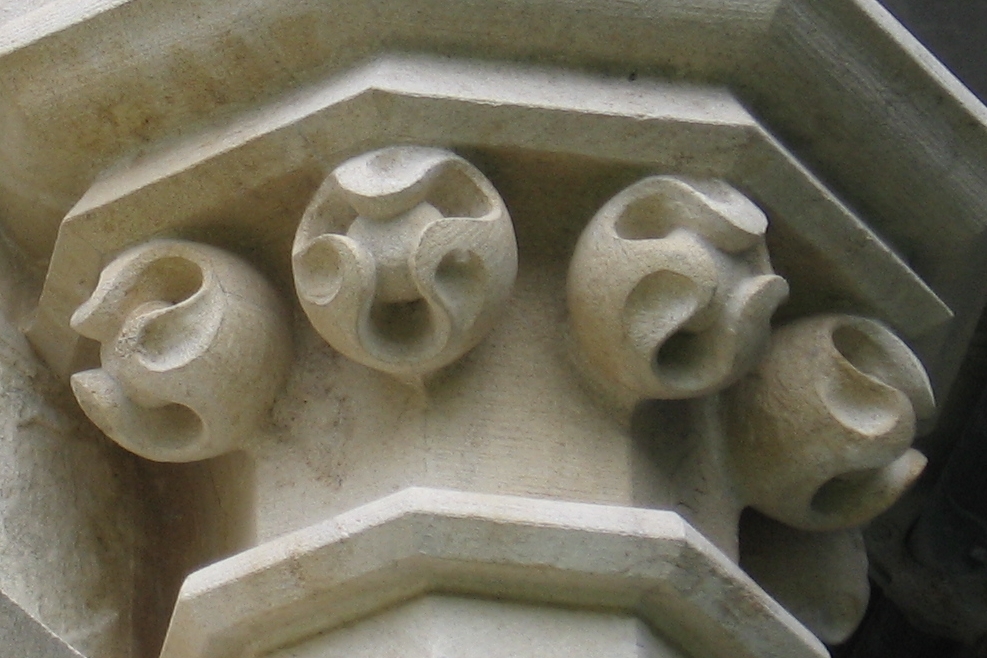Ballflower on:
[Wikipedia]
[Google]
[Amazon]

 The ball-flower (also written ballflower) is an architectural ornament in the form of a ball inserted in the cup of a
The ball-flower (also written ballflower) is an architectural ornament in the form of a ball inserted in the cup of a
Picture of ball-flowers outlining a window of Gloucester Cathedral
Ornaments (architecture) Visual motifs {{Architecturalelement-stub

 The ball-flower (also written ballflower) is an architectural ornament in the form of a ball inserted in the cup of a
The ball-flower (also written ballflower) is an architectural ornament in the form of a ball inserted in the cup of a flower
A flower, sometimes known as a bloom or blossom, is the reproductive structure found in flowering plants (plants of the division Angiospermae). The biological function of a flower is to facilitate reproduction, usually by providing a mechani ...
. It came into use in the latter part of the 13th century in England and became one of the chief ornaments of the 14th century, in the period known as Decorated Gothic
English Gothic is an architectural style that flourished from the late 12th until the mid-17th century. The style was most prominently used in the construction of cathedrals and churches. Gothic architecture's defining features are pointed ar ...
.
Ball-flowers were generally placed in rows at equal distances in the hollow of a moulding, frequently by the sides of mullion
A mullion is a vertical element that forms a division between units of a window or screen, or is used decoratively. It is also often used as a division between double doors. When dividing adjacent window units its primary purpose is a rigid supp ...
s. Examples are found in many churches of the period including Gloucester Cathedral; St Mary's Church, Bloxham; St. Michael's Church, Swaton ( 1300); and Tewkesbury Abbey
The Abbey Church of St Mary the Virgin, Tewkesbury–commonly known as Tewkesbury Abbey–is located in the English county of Gloucestershire. A former Benedictine monastery, it is now a parish church. Considered one of the finest examples of No ...
( 1330). The presence of ball-flowers on the west part of Salisbury Cathedral has helped date this facade to the 14th century.
References
Sources
*External links
Picture of ball-flowers outlining a window of Gloucester Cathedral
Ornaments (architecture) Visual motifs {{Architecturalelement-stub